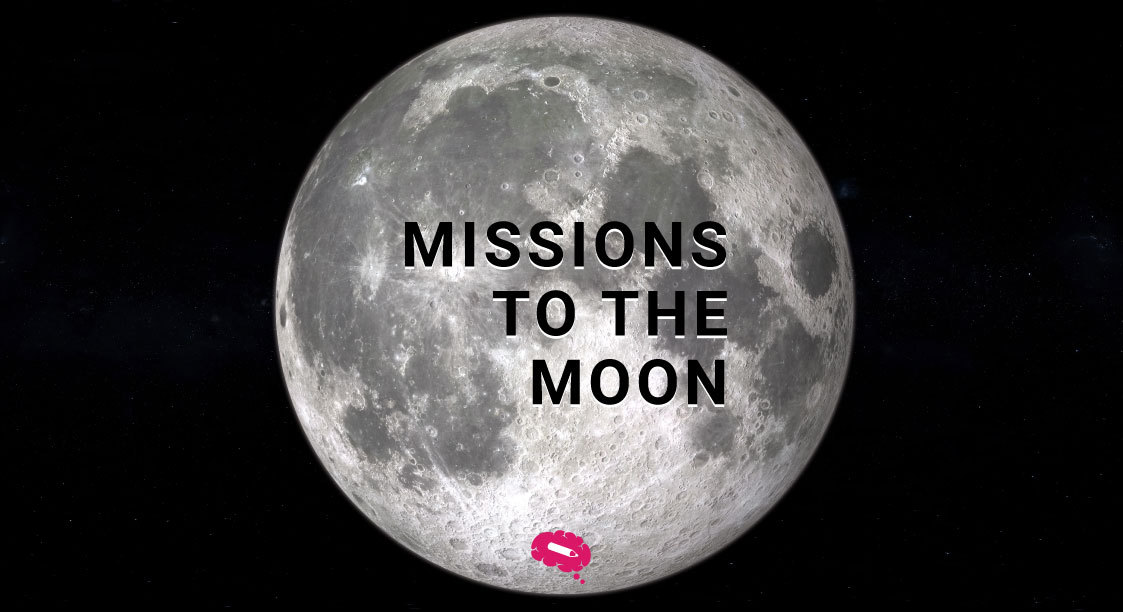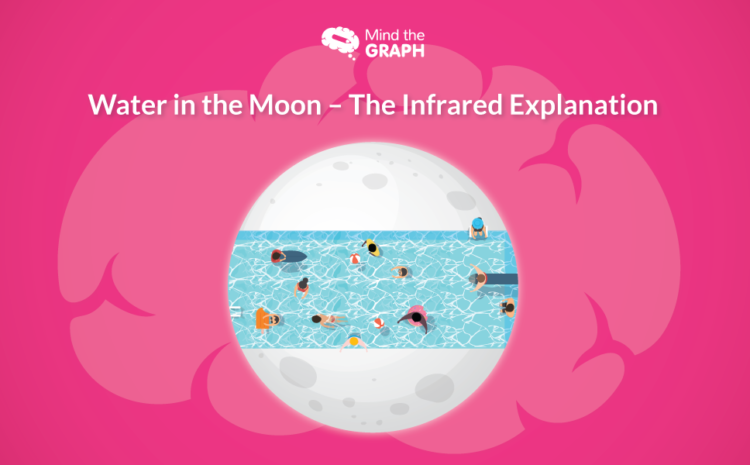Oppdrag til månen har fascinert og utforsket oss i mange år. For hvert oppdrag får vi mer kunnskap om månen og dens potensielle bruksområder. Det første måneoppdraget fant sted i 1969, men interessen for månen har ikke avtatt, og det har vært flere oppdrag siden den gang.
The moon has always captured the imagination of humans, and with technological advancements, we are now able to explore the moon in more detail. Missions to the moon are essential to our understanding of the moon’s surface, environment, and resources. Scientists are continually looking for ways to improve their knowledge of the moon and how it can be used to benefit life on Earth.
I denne artikkelen vil du lære mer om oppdragene til månen og se dem fra perspektivet til våre vitenskapelige illustrasjoner.
Hvor mange ferder til månen ble foretatt?
Since the first attempts to reach the moon, there have been over 100 missions to the Earth’s natural satellite. However, not all missions have been successful, and several attempts have resulted in failure.
Hvor mange ganger har mennesker vært på månen?
In total, there have been 24 manned missions to the moon, with six of them landing on its surface successfully. All six of these manned missions were part of NASA’s Apollo program, with the last successful landing being the Apollo 17 mission in 1972.
Along with manned missions, there have been numerous unmanned missions to the moon, both successful and unsuccessful. These missions were conducted by various space agencies, including NASA, the Soviet Union’s space program, and China’s National Space Administration. Some of the most notable unmanned missions to the moon include the Luna 1 and Luna 2 missions by the Soviet Union in 1959, the Surveyor missions by NASA in the 1960s, and the recent Chang’e missions by China.
Hvor mange land har gått på månen?
In total, only three countries have managed to land spacecraft on the moon and conduct crewed missions there. The United States achieved this feat first, with the historic Apollo 11 mission in 1969, followed by five more Apollo missions through 1972. The Soviet Union, now known as Russia, sent several unmanned spacecraft to the moon, including the first-ever successful soft landing in 1966, but their manned missions never made it past Earth’s orbit.
Finally, China became the third country to successfully land a spacecraft on the moon in 2013, with their Chang’e 3 mission, and have since sent several more missions to explore the lunar surface. As of now, these three countries remain the only ones to have successfully landed on and explored the moon.
Vellykkede bemannede ferder til månen illustreres
For å gi deg et nytt perspektiv på oppdragene til månen har vi laget seks nye illustrasjoner av hver av de vellykkede oppdragene, som alle allerede er tilgjengelige i galleriet vårt. Alle disse oppdragene ble utført av NASA som en del av Apollo-programmet mellom 1969 og 1972.
Oppdrag 1: Apollo 11 (1969)
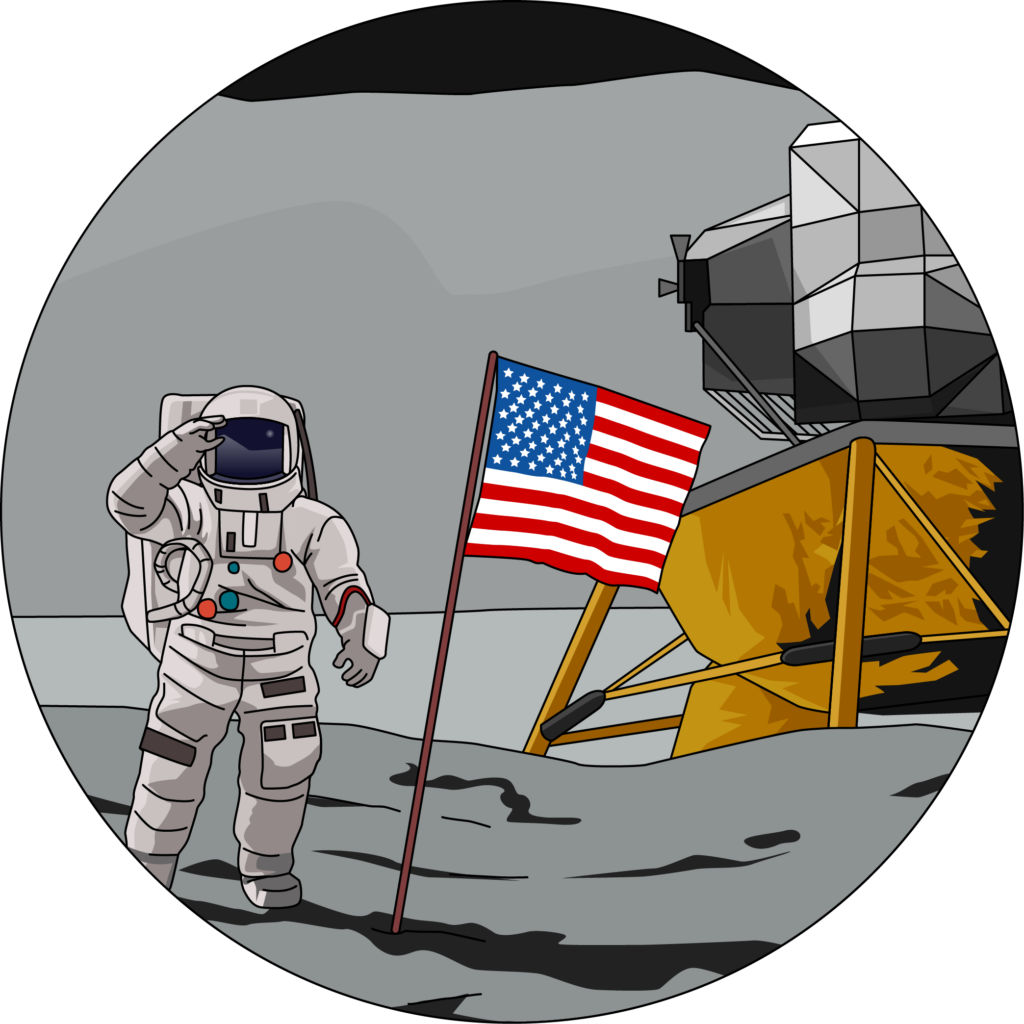
The first mission to the moon was the historic Apollo 11 mission, launched by NASA on July 16, 1969. The spacecraft was manned by three astronauts: Commander Neil Armstrong, Lunar Module Pilot Edwin “Buzz” Aldrin, and Command Module Pilot Michael Collins. The mission was a culmination of a decade-long effort by NASA to land humans on the moon and return them safely to Earth.
After a journey of approximately 240,000 miles, the lunar module, named “Eagle,” separated from the command module and landed on the moon’s surface on July 20. The mission marked a major achievement in human space exploration and sparked a new era of scientific discovery and exploration of our solar system.
Oppdrag 2: Apollo 12 (1969)
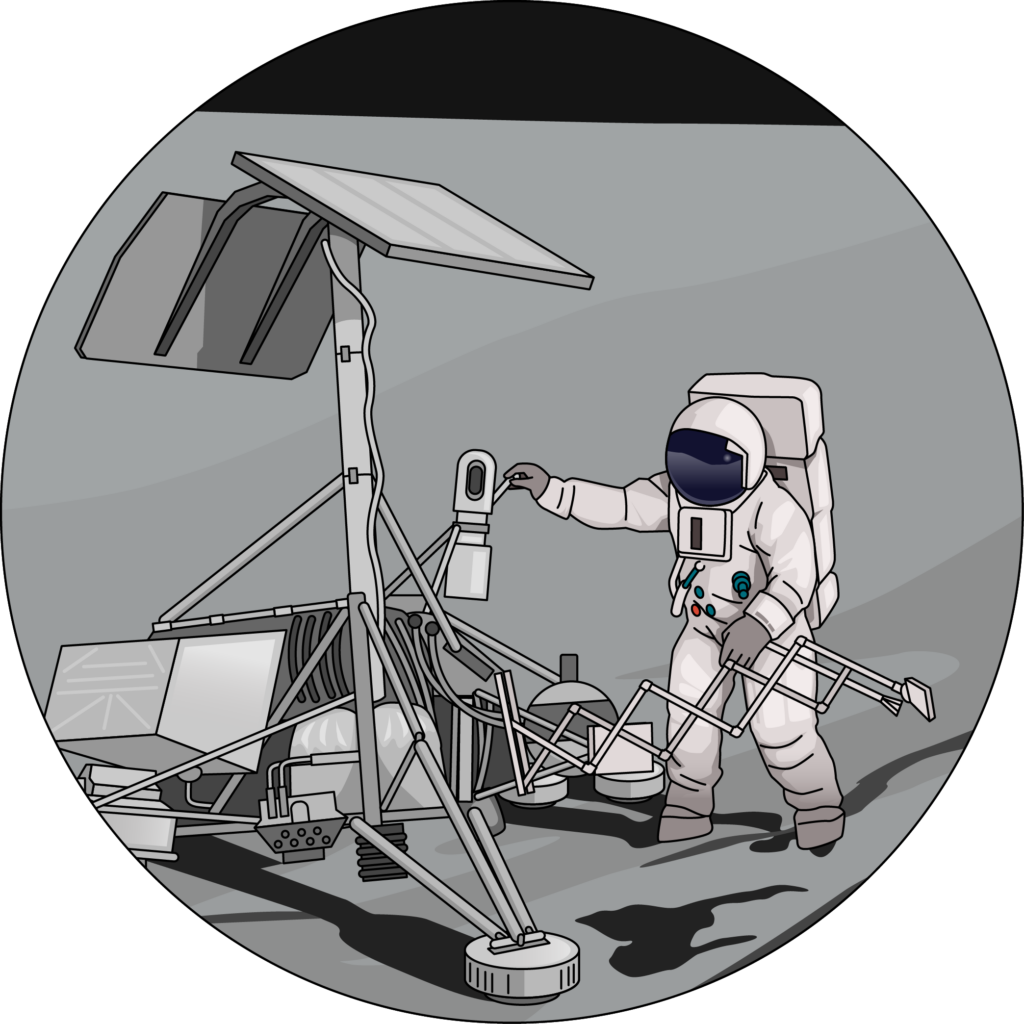
Apollo 12 was launched on November 14, 1969, just a few months after the historic Apollo 11 mission. The mission’s main goal was to conduct further exploration and scientific research on the lunar surface.
The crew conducted two moonwalks, gathering rock and soil samples and deploying scientific instruments. The mission was successful, and the astronauts returned to Earth on November 24, 1969. Apollo 12’s achievements helped lay the groundwork for further exploration of the moon and deepened our understanding of our nearest celestial neighbor.
Oppdrag 3: Apollo 14 (1971)

Apollo 14 var NASAs tredje vellykkede månelandingsoppdrag og ble skutt opp 31. januar 1971. Romfartøyet var bemannet med kommandør Alan Shepard, månelandingspiloten Edgar Mitchell og kommandomodulpiloten Stuart Roosa.
Hovedmålet med ferden var å samle inn stein- og jordprøver fra Fra Mauro-høylandet på månen, som man antok var et vulkansk område, og å gjennomføre flere vitenskapelige eksperimenter. Under månevandringene samlet mannskapet inn over 90 kilo prøver, installerte vitenskapelige instrumenter og utførte seismiske eksperimenter.
Oppdrag 4: Apollo 15 (1971)
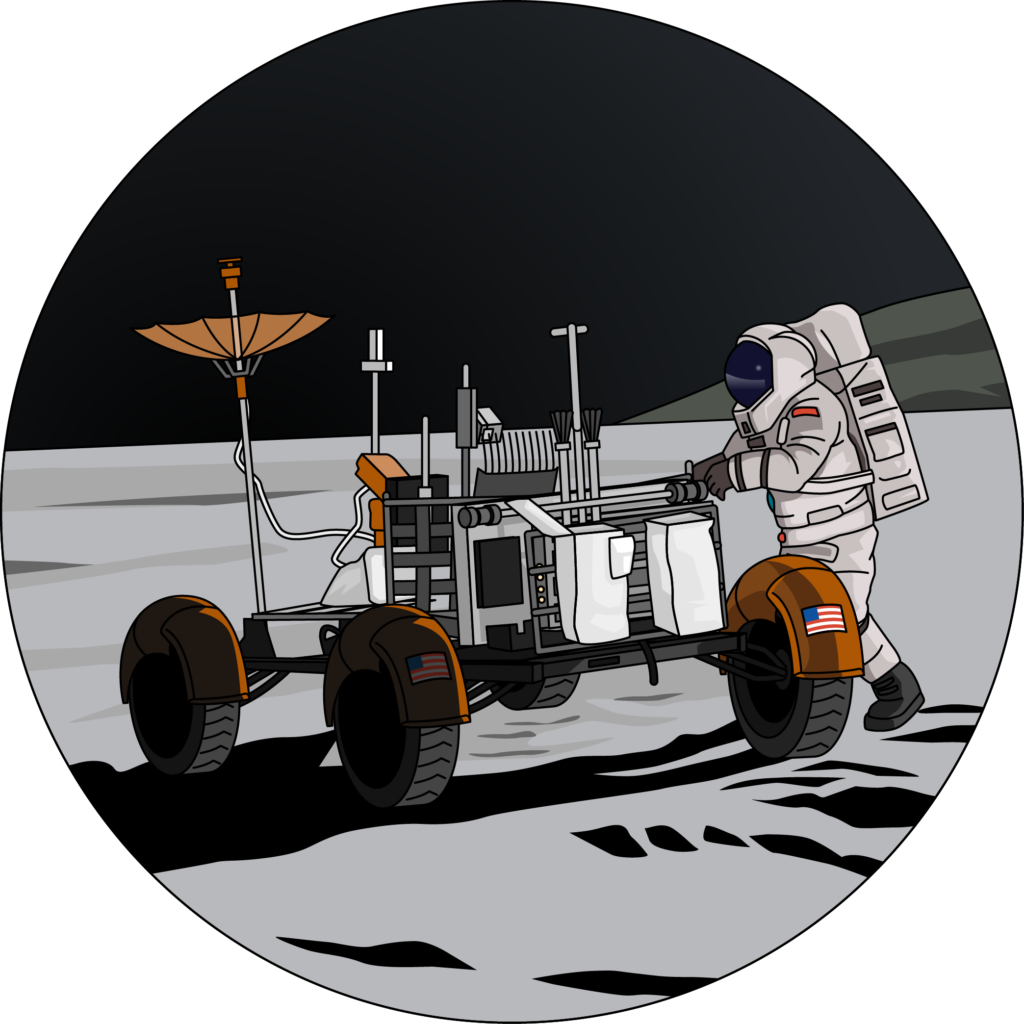
Apollo 15 provided invaluable data that deepened our understanding of the moon’s origins, evolution, and geologic history, and set the stage for more complex future explorations. Their mission focused on advancing our understanding of the moon’s geology and conducting more sophisticated scientific experiments on the lunar surface.
I løpet av de tre månevandringene brukte de Lunar Roving Vehicle (LRV) til å tilbakelegge en større distanse og samle inn mer enn 170 kilo stein- og jordprøver, den største samlingen fra noen måneferd. I mellomtiden gikk et annet besetningsmedlem i bane over dem og utførte eksperimenter og tok bilder med et høyoppløselig kamera.
Oppdrag 5: Apollo 16 (1972)
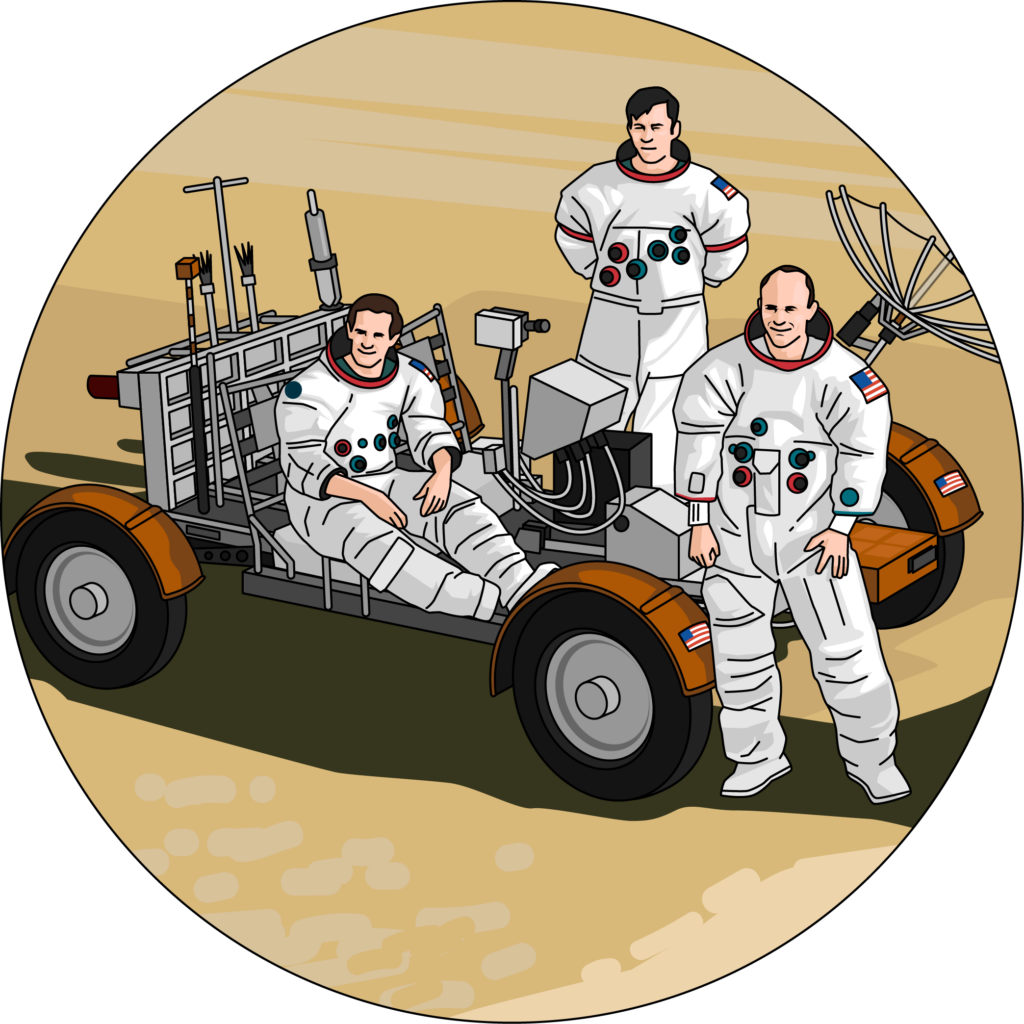
The fifth mission to land on the moon was Apollo 16, launched by NASA on April 16, 1972. The mission’s primary objective was to explore the lunar highlands and conduct scientific experiments on the moon’s geology.
They collected over 200 pounds of rock and soil samples and deployed several experiments while Mattingly orbited above them. The mission was a success and provided valuable new data about the moon’s composition and history.
Oppdrag 6: Apollo 17 (1972)
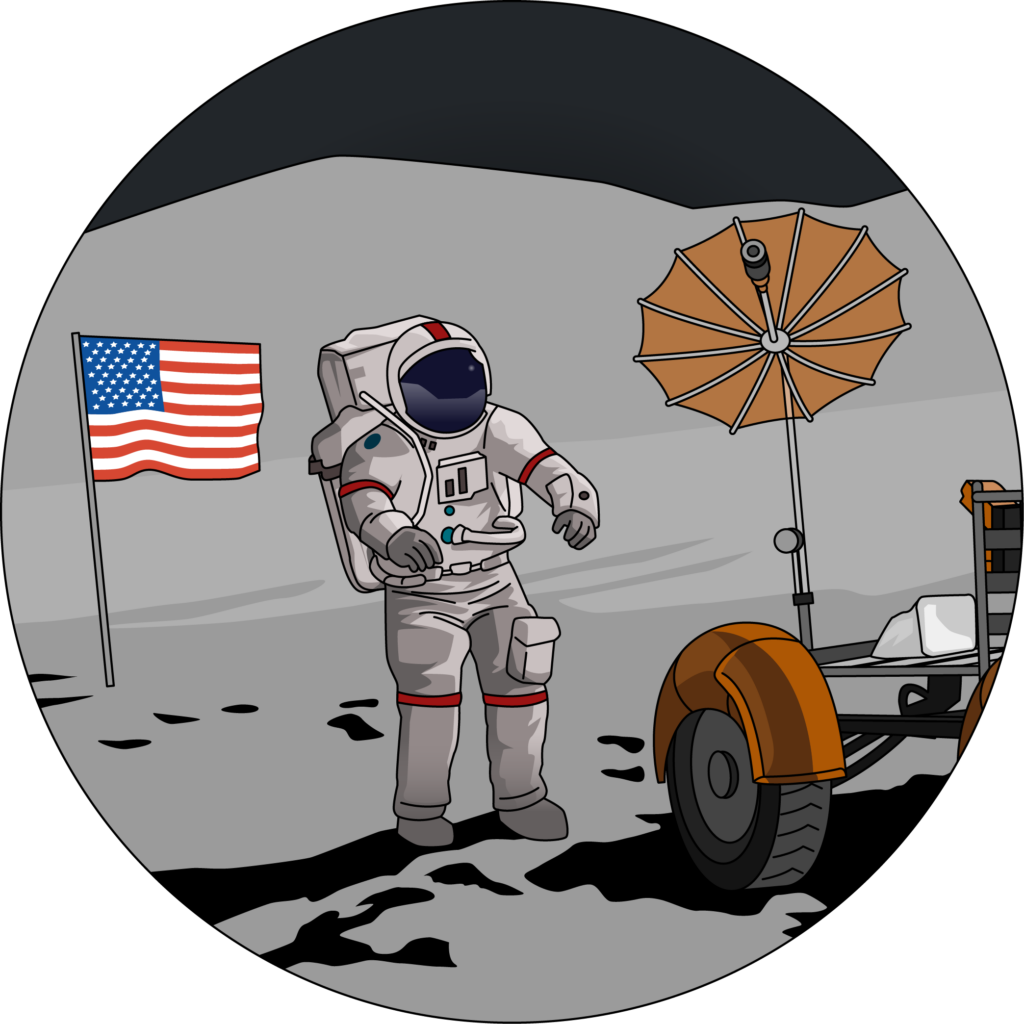
The last successful mission to land on the moon was Apollo 17, launched by NASA on December 7, 1972. Its primary objective was to conduct a detailed geological survey of the Taurus-Littrow Valley region of the moon. The crew spent over 22 hours on the moon’s surface while other members remained in lunar orbit, conducting experiments and photographing the moon’s surface.
The mission was a complete success and returned with an abundance of new information about the moon’s geology, mineralogy, and history. It was the final manned mission to the moon conducted by NASA. No manned missions have returned to the moon since the Apollo program ended, but there are plans for future manned missions to the moon in the coming years.
Alle disse illustrasjonene av nye måneoppdrag er tilgjengelige i vår galleri.
Moderne måneferder: dagens situasjon
One of the most recent missions to the moon was the Chang’e-5 mission launched by China in 2020. The mission was a success, and it brought back soil samples from the moon’s surface. The samples were studied to gain a better understanding of the moon’s formation and its geological history. This mission was a significant achievement for China, and it marked a milestone in their space exploration program.
Another mission to the moon that garnered a lot of attention was the Artemis program launched by NASA. The program aims to land humans on the moon again by 2024, and it is expected to have a significant impact on space exploration. The Artemis program is expected to help us better understand the moon’s resources, its environment, and its potential uses. With this program, we could develop technologies that would allow us to live on the moon and use its resources.
Neste NASA-oppdrag: Artemis-programmet
The Artemis program has several missions planned, and each one is aimed at achieving specific goals. The first mission, Artemis I, was launched uncrewed in 2021, and its goal was to test the Space Launch System and the Orion spacecraft. The second mission, Artemis II, is expected to be a crewed mission that will orbit the moon soon, in 2024. The third mission, Artemis III, is expected to land humans on the moon’s surface. These missions are a significant step forward in our exploration of the moon, and they are expected to help us learn more about the moon’s potential.
In addition to the Artemis program, there are several other missions planned to the moon in the near future. The VIPER mission, set to launch in 2023, aims to explore the moon’s south pole region and look for water ice. The CLPS program is also expected to conduct several missions to the moon, and these missions will focus on delivering payloads to the moon’s surface.
Betydningen av moderne måneferder
Missions to the moon are essential for our understanding of the moon and its potential uses. With each mission, we gain more knowledge about the moon’s surface, environment, and resources. This knowledge can be used to develop technologies that will allow us to live on the moon and use its resources. The moon is a valuable resource, and it has the potential to help us in several ways.
One of the ways the moon can be used is for space exploration. With the moon as a base, we could launch missions to other planets and explore the universe in greater detail. The moon’s resources could also be used to build spacecraft and other technologies needed for space exploration. With the moon as a base, we could develop technologies that would make space exploration more accessible and cost-effective.
Vis forskningen din grafisk med Mind the Graph
Forvandle komplekse data til vakker og lettfattelig infografikk. Ved å kombinere de største vitenskapelig nøyaktige illustrasjonene i verden med enkle designverktøy kan du gjøre forskningsrapporten din mer relevant og tilgjengelig for publikum. Abonner på Mind the Graph og begynn å utforske verktøyet vårt.

Abonner på nyhetsbrevet vårt
Eksklusivt innhold av høy kvalitet om effektiv visuell
kommunikasjon innen vitenskap.

